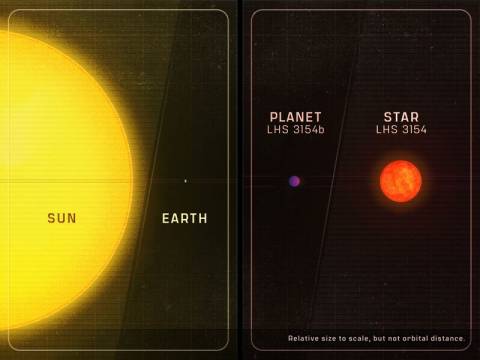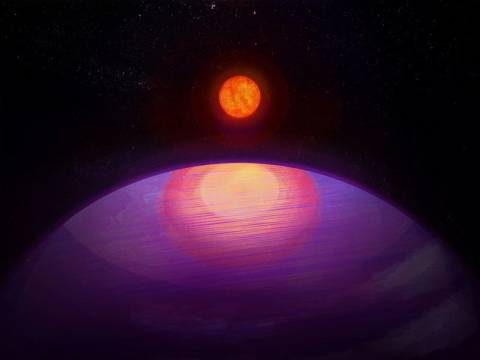By Will Dunham

WASHINGTON (Reuters) - Our Milky Way galaxy's most common type of star is called a red dwarf - much smaller and less luminous than our sun. These stars - or so it was thought - simply are not big enough to host planets much larger than Earth.

But the discovery of a planet at least 13 times Earth's mass orbiting very close to a red dwarf only 11% of the sun's mass has astronomers going back to the drawing board on planetary formation theory involving this prevalent type of star. The mass ratio of this planet with its star is more than 100 times greater than that of Earth and the sun.
We discovered a planet that is too massive for its star, said Penn State astronomer Suvrath Mahadevan, one of the leaders of the study published this week in the journal Science.
The star, called LHS 3154, is relatively close to us, about 50 light years from Earth. A light year is the distance light travels in a year, 5.9 trillion miles (9.5 trillion km).
The sun is about a thousand times more luminous than this star.
It is barely a star, said Princeton University astronomer Guðmundur Stefánsson, the study's lead author. It has a mass just above the cutoff of supporting hydrogen fusion to be considered a star.
The planet, called LHS 3154 b, orbits at about 2.3% of Earth's orbital distance from the sun, circling its star every 3.7 days. It is much closer even than our solar system's innermost planet Mercury is to the sun.
The planet may be similar in size and composition to Neptune, the smallest of our solar system's four gas planets. Neptune's diameter is about four times that of Earth. The method employed to study the planet did not enable the researchers to measure its diameter, but they suspect it is about three to four times that of Earth.
Neptune, which lacks a solid surface, possesses a dynamic atmosphere mainly of hydrogen and helium, atop a mantle mostly of slushy ammonia and water and a solid core. Based on its probable Neptune-like composition and closeness to its star, it is unlikely to support life, Stefánsson said.
Stars form when dense clumps of interstellar gas and dust collapse under their own gravitational pull. Once a star is born at the center of such a cloud, leftover material forms a swirling disk around it that feeds stellar growth and often gives rise to planets.
So why should a red dwarf not be able to host a planet the size of the newly described one?
The planet-forming disk around stars is only a small fraction of the stellar mass, and is expected to scale with that mass. So a very low mass star should have a disk that is also low mass. Such a disk should not be heavy enough to birth the planet we discovered, Mahadevan said.
This planet raises questions of how planets form around the lowest mass stars, because such stars were previously thought to primarily only be able to form small terrestrial planets similar in mass to Earth, Stefánsson said.
The researchers discovered LHS 3154 b by detecting a subtle wobble in the host star caused by the planet's gravitational effects during its orbit. They used an instrument called the Habitable Zone Planet Finder (HPF), built by a team led by Mahadevan, on the Hobby-Eberly Telescope at the University of Texas' McDonald Observatory.
It was designed to find planets that orbit relatively cool stars and have the potential for liquid water on their surfaces, a key factor for life.
As we build new instruments, and as our measurement precision increases, we see the universe in new, unexpected ways, Mahadevan said. We built HPF to detect terrestrial planets around these cool stars. This discovery is another in the constant stream of surprises showing how much we still have to learn about planets and planet formation.
(Reporting by Will Dunham, Editing by Rosalba O'Brien)
